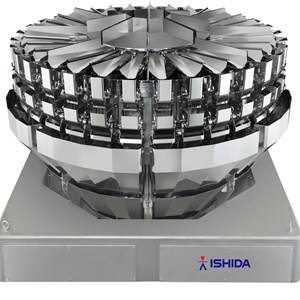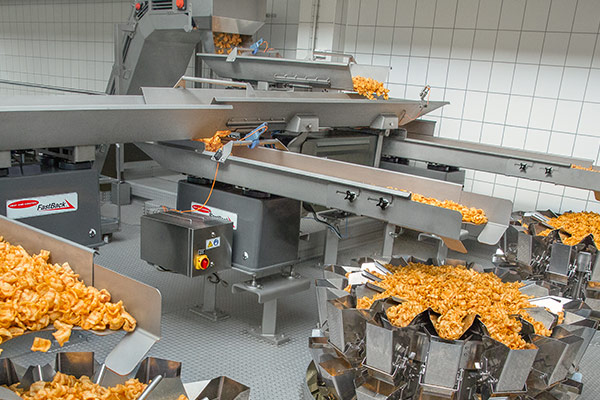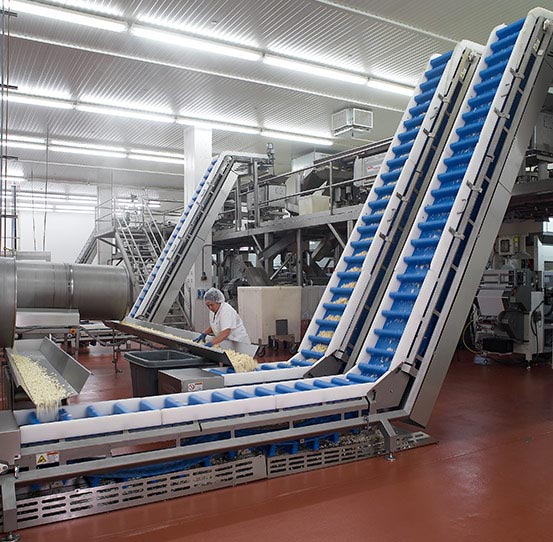A Guide to Computer Combination Weighers
Ensuring Accurate Packaging
Computer combination weighers (CCW) are types of scales that use multiple weighers and increments to correctly weigh a product so that it’s ready for the packaging stage of production. These scales are popular in the food industry due to their accuracy, which helps with keeping product costs down. When selling a packaged product, you want to be sure its contents are consistent with the description. This is not only important for your production’s sake but for the customer as well. Incorporating a computer combination weigher into your operations will ensure that every single output of production is the correct weight.
In this CCW guide, we will be covering the following:
- What is a computer combination weigher
- Types of computer combination weighers
- How does a computer combination weigher work
- Integrating a computer combination weigher into production
- Where a computer combination weigher fits in production
- Manufacturers we offer
- Questions to ask before buying a CCW
What is a Computer Combination Weigher?

Source: ishida.com
CCWs are commonly utilized in the food industry, specifically bakery, cereal, grain, prepared convenience food, snack food, meats and other seafood and poultry, and pet food companies.
Some sample products that these machines typically run are
- Frozen vegetable mixes
- Trail mix
- Candy assortments
- Multi-component cereals
- Snack foods
- Pet food
- Nut snacks
Types of computer combination weighers
There are two different bucket types of CCWs that you will need to decide between, dimpled and smooth. The decision whether to choose a dimpled or smooth CCW will depend on what type of product you are running.
Dimpled - this is ideal for wet or sticky products. These buckets reduce the surface tension which allows the product to move easily down the weigher. Some example products that would utilize a dimpled bucket are fruit snacks, lettuce, raw meats, and more.
Smooth - any other dry or non-sticky products will be able to easily run through a scale that has smooth buckets. Some examples of this would be trail mix, nuts, dry dog food, and more
How does a computer combination weigher work
CCWs have an HMI (Human Machine Interface) that can control the changing of weights, powering of individual buckets, and elongating product records. The weighing process starts with the product being poured into the top of the weigher through the rotary cone head. This is usually done by upstream equipment. With the help of the top of the scale vibrating, the product is then dispersed into the multiple weighing heads. The scale adds each head and when the proper weight is acquired, the product is then discharged from the scale to continue through the production process. See below to watch a demonstration of a Multipond MP 1601-FF-(2x8) SS Combination Weigher that our engineering services shop recently worked on.
Upstream Equipment

https://www.heatandcontrol.com/

Source: https://www.heatandcontrol.com/
These are the types of equipment that will bring the product to the CCW. Most commonly seen are pieces such as:
- Cleated incline conveyors
- Vibratory feeder - linear
- Vibratory and slide conveyor
Downstream Equipment
This will be any piece of equipment that will package the product once it is weighed properly. These machines will include:
-Bagging machines
- Cartoner
- Case packer
- Palletizer
Here is a video example of what the downstream stage of production with a CCW will look like.
Integrating a computer combination weigher into production
CCWs are extremely beneficial to the speed and accuracy of a production line, but only if they are integrated with the correct complementary equipment. Having a fully integrated line will automate your packaging process and increase output.
SIGMA’s engineering services shop has worked on several integration projects with CCWs. One project included combining five pieces of equipment to help weigh, fill and package bags of oats. This line integration allows for our customers to conveniently stop and start the line operations from the centrally located HMI to reduce the possibility of product backup. To learn more about this engineering project, check out the video below.
Where a computer combination weigher fits in production
So now that you have learned all about how to integrate a CCW into your production and the equipment that work well with it, both upstream and downstream, we can cover where the scale can fit into your production line.
The majority of times, CCWs are mounted on mezzanines so that the downstream packaging equipment can be set up beneath it. This method will maximize the space in your production.
Manufacturers
SIGMA sells a wide variety of scales and weighers. Some manufacturers we recommend buying a CCW from are
- Ishida
- Weighpack
- Yamato
To see a full list of manufacturers SIGMA offers, click here.
Questions to ask before purchasing
Before you jump into purchasing a CCW for your production, there are a few things you should first consider. The answer to these questions can determine if this is the weigher that will best suit your requirements, what type of CCW will you need, and will it need any additional services. If you need help with answering any of these questions, get in touch with one of our sales experts and they will gladly walk you through them.
- How many weighing heads does this unit have?
- What is the minimum/maximum weight of a single dump of product?
- How many weighs per minute can this machine do?
- What is the volume of the weighing buckets?
- What is the weighing accuracy of this machine?
- What product was this machine last running?
- What is the machine frame or base fade of? (stainless steel, mild steel, other)
- Is this unit completely wash down capable (If you are running food products this is very important)
- What kind of control panel does this machine have? (keypad, touchscreen, preset job list, manual switches, etc)
- What type of buckets does the scale have? (smooth or dimpled)
Two other tips from our engineering services shop that you should consider if you own or are looking to purchase a CCW,
Maintaining the control panel is very important. These controls are located on the base of the equipment and can corrode very easily if preventive measures are not taken
When shipping this weigher, the buckets should always be removed beforehand to prevent any damage to them or the machine
Summary
Computer combination weighers are combination scales that measure out a bulk product into smaller increments using bucket heads and then recombine at the bottom for that desired, total weight. These machines are perfect for the food industry so that customers can be sure their products are being packaged in the correct weight or amount every single time. Incorporating a computer combination weigher into a production line is essential to ensure quality control and to avoid any discrepancies in products.
Or, if you have some more questions and would like to talk to one of our equipment experts directly, give us a call at (812) 303-8383

